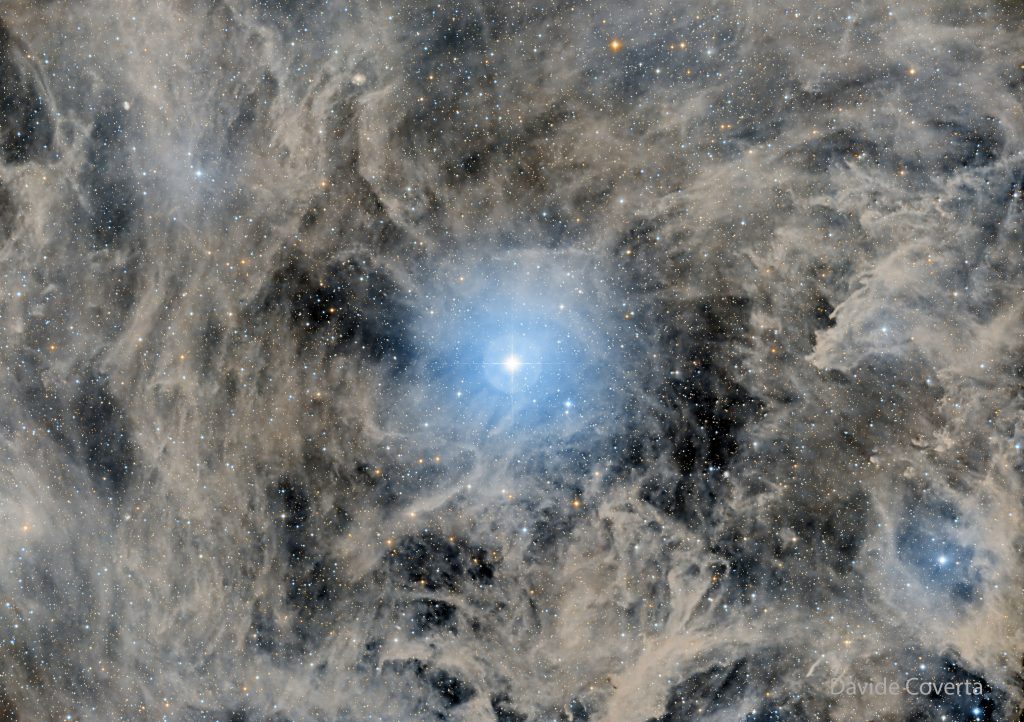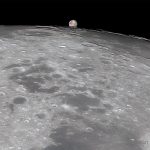Foto astronómica del día
Descripción original:
North Star: Polaris and Surrounding Dust
North Star: Polaris and Surrounding Dust
2025-01-14
Why is Polaris called the North Star? First, Polaris is the nearest bright star toward the north spin axis of the Earth. Therefore, as the Earth turns, stars appear to revolve around Polaris, but Polaris itself always stays in the same northerly direction — making it the North Star. Since no bright star is near the south spin axis of the Earth, there is currently no bright South Star. Thousands of years ago, Earth’s spin axis pointed in a slightly different direction so that Vega was the North Star. Although Polaris is not the brightest star on the sky, it is easily located because it is nearly aligned with two stars in the cup of the Big Dipper. Polaris is near the center of the five-degree wide featured image, a digital composite of hundreds of exposures that brings out faint gas and dust of the Integrated Flux Nebula (IFN) all over the frame. The surface of Cepheid Polaris slowly pulsates, causing the famous star to change its brightness by a few percent over the course of a few days. Today: Zoom APOD Lecture hosted by the Amateur Astronomers of Association of New York
Copyright:
Davide Coverta
Comentario de la AI
Explorando la Estrella del Norte: Polaris y su Encantador Entorno de Polvo Cósmico
Explorando la Estrella del Norte: Polaris y su Encantador Entorno de Polvo Cósmico

¿Por qué Polaris es conocida como la Estrella del Norte? Polaris destaca por ser la estrella brillante más cercana al eje de rotación norte de la Tierra. A medida que nuestro planeta gira, las estrellas parecen girar alrededor de Polaris. Sin embargo, esta estrella permanece siempre en la misma dirección septentrional, lo que la define como la Estrella del Norte.
Curiosamente, no existe una estrella brillante cerca del eje de rotación sur de la Tierra, lo que significa que actualmente no tenemos una Estrella del Sur. Hace miles de años, la estrella Vega ocupaba el puesto de Estrella del Norte debido a una ligera variación en el eje de rotación terrestre.
Aunque Polaris no es la estrella más brillante del cielo, su localización es sencilla, ya que está casi alineada con dos estrellas del cazo de la Osa Mayor. La estrella Polaris se sitúa cerca del centro de una imagen destacada de cinco grados de ancho, que es un compuesto digital de cientos de exposiciones diseñadas para resaltar el tenue gas y polvo de la nebulosa de flujo integrado (Integrated Flux Nebula) que rodea todo el cuadro.
Además, la superficie de Polaris, que es una variable Cefeida, pulsa lentamente, haciendo que la famosa estrella cambie su brillo un pocos por ciento a lo largo de algunos días.
Hoy en día, existe una conferencia virtual sobre APOD organizada por la Asociación de Astrónomos Aficionados de Nueva York que explora estos temas fascinantes.


